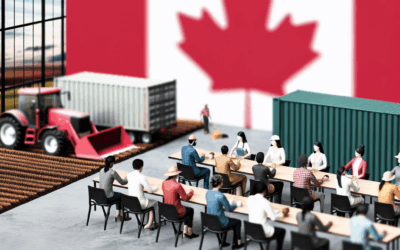Highway congestion in Canada is a growing concern that affects millions of commuters, businesses, and the economy at large. As urban populations expand and vehicle ownership increases, the strain on transportation infrastructure has become more pronounced. Major cities like Toronto, Vancouver, and Montreal are particularly hard-hit, with rush hour traffic often leading to significant delays, increased fuel consumption, and higher pollution levels. This article will explore the root causes of highway congestion, its impact on daily life and the economy, and potential solutions that could alleviate the problem. By understanding the complexities of this issue, we can better appreciate the need for sustainable and efficient transportation strategies.
The Root Causes of Highway Congestion
Highway congestion in Canada stems from a combination of factors. Rapid urbanization has led to increased population density in major cities, while reliance on personal vehicles remains high. Public transportation systems, though available, often do not meet the needs of all commuters, pushing more people onto the roads. Additionally, aging infrastructure and insufficient road expansions have failed to keep pace with the growing number of vehicles. Seasonal factors, such as winter weather conditions, further exacerbate the problem by slowing down traffic and causing delays.
Economic Impact of Traffic Congestion
Traffic congestion has a significant economic toll. Delays in commuting result in lost productivity, while increased fuel consumption raises costs for both individuals and businesses. The trucking industry, which relies heavily on highways for transporting goods, faces higher operational expenses due to delays. Furthermore, congestion contributes to vehicle wear and tear, leading to additional maintenance costs. On a broader scale, it discourages investment in affected regions, as businesses may seek areas with better transportation infrastructure.
Environmental Consequences
Highway congestion also has a notable environmental impact. Idling vehicles emit higher levels of greenhouse gases and pollutants, contributing to air quality issues and climate change. Cities with chronic congestion often struggle to meet environmental targets, as traffic-related emissions remain a persistent challenge. Noise pollution is another concern, particularly for residents living near major highways. Addressing congestion is therefore not only a matter of convenience but also a critical step toward achieving sustainability goals.
Public Transportation as a Solution
One of the most effective ways to reduce highway congestion is by improving public transportation systems. Expanding transit networks, increasing frequency, and ensuring affordability can encourage more people to leave their cars at home. Investments in rail systems, buses, and cycling infrastructure can provide viable alternatives to driving. Cities like Vancouver have seen success with initiatives like the SkyTrain, which has reduced traffic congestion in certain areas. However, public transportation must be designed to meet the diverse needs of commuters to be truly effective.
Technological Innovations and Smart Infrastructure
Advancements in technology offer promising solutions to highway congestion. Intelligent transportation systems, such as real-time traffic monitoring and adaptive signal control, can optimize traffic flow. Connected and autonomous vehicles have the potential to reduce accidents and improve efficiency. Additionally, investments in smart infrastructure, like dedicated lanes for electric vehicles and carpooling, can further alleviate congestion. Governments and private companies must collaborate to implement these technologies on a broader scale.
Policy Measures and Future Outlook
Government policies play a crucial role in addressing highway congestion. Measures such as congestion pricing, which charges drivers for using busy roads during peak hours, can discourage unnecessary travel. Zoning regulations that promote mixed-use developments can reduce the need for long commutes. Long-term planning that prioritizes sustainable urban growth and transportation alternatives is essential. While progress may be slow, a combination of policy changes, technological innovations, and public awareness can pave the way for a less congested future.
Highway congestion in Canada is a multifaceted issue with far-reaching implications for the economy, environment, and quality of life. While the challenges are significant, there are numerous strategies that can help mitigate the problem. From improving public transportation to leveraging technological advancements, the solutions require a collaborative effort between governments, businesses, and individuals. By addressing the root causes and implementing sustainable practices, Canada can create a more efficient and environmentally friendly transportation system. The road to reducing congestion may be long, but with the right approach, it is a journey worth taking.



